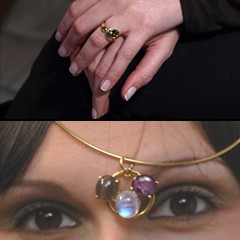Liquid blue of the sea
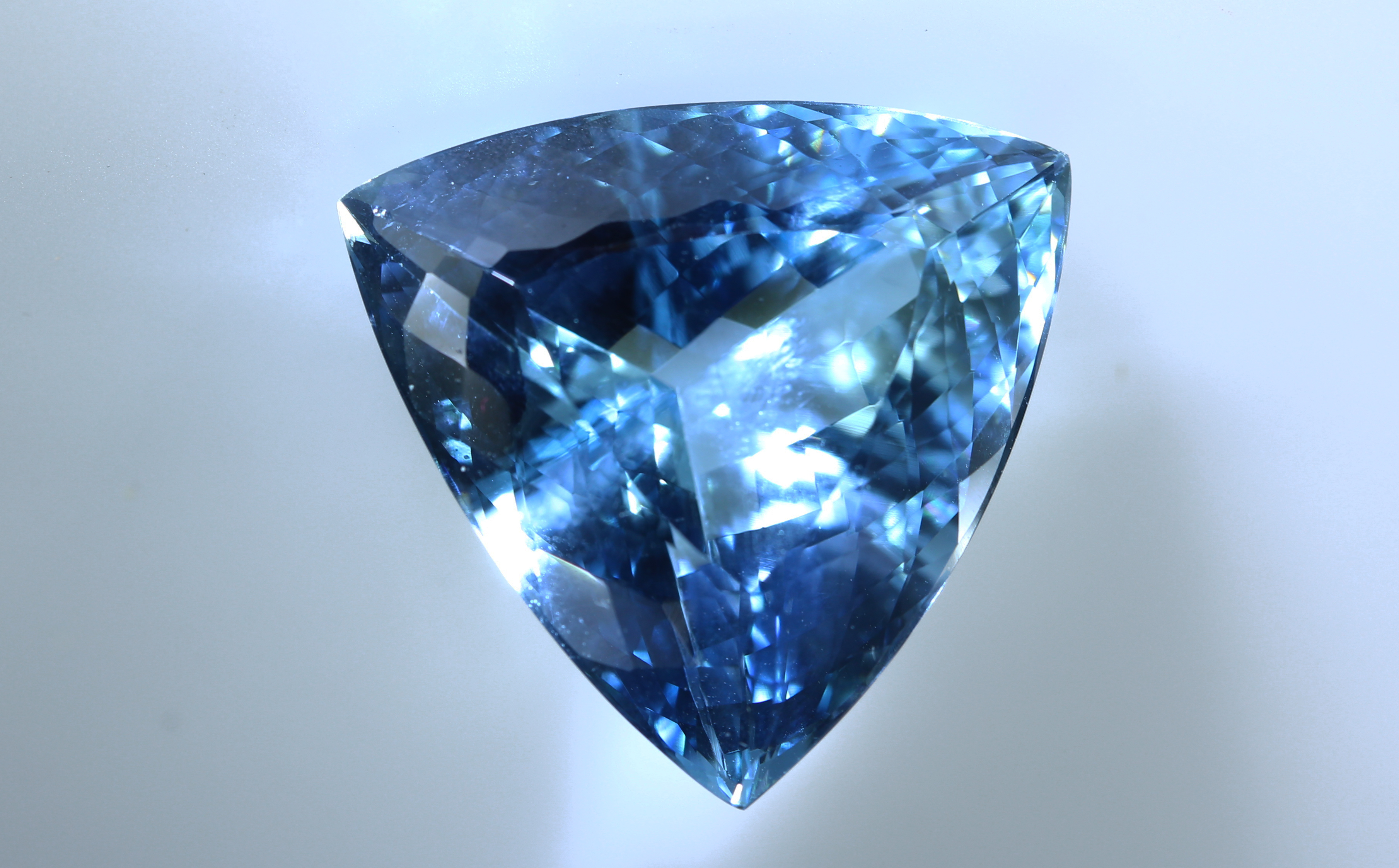
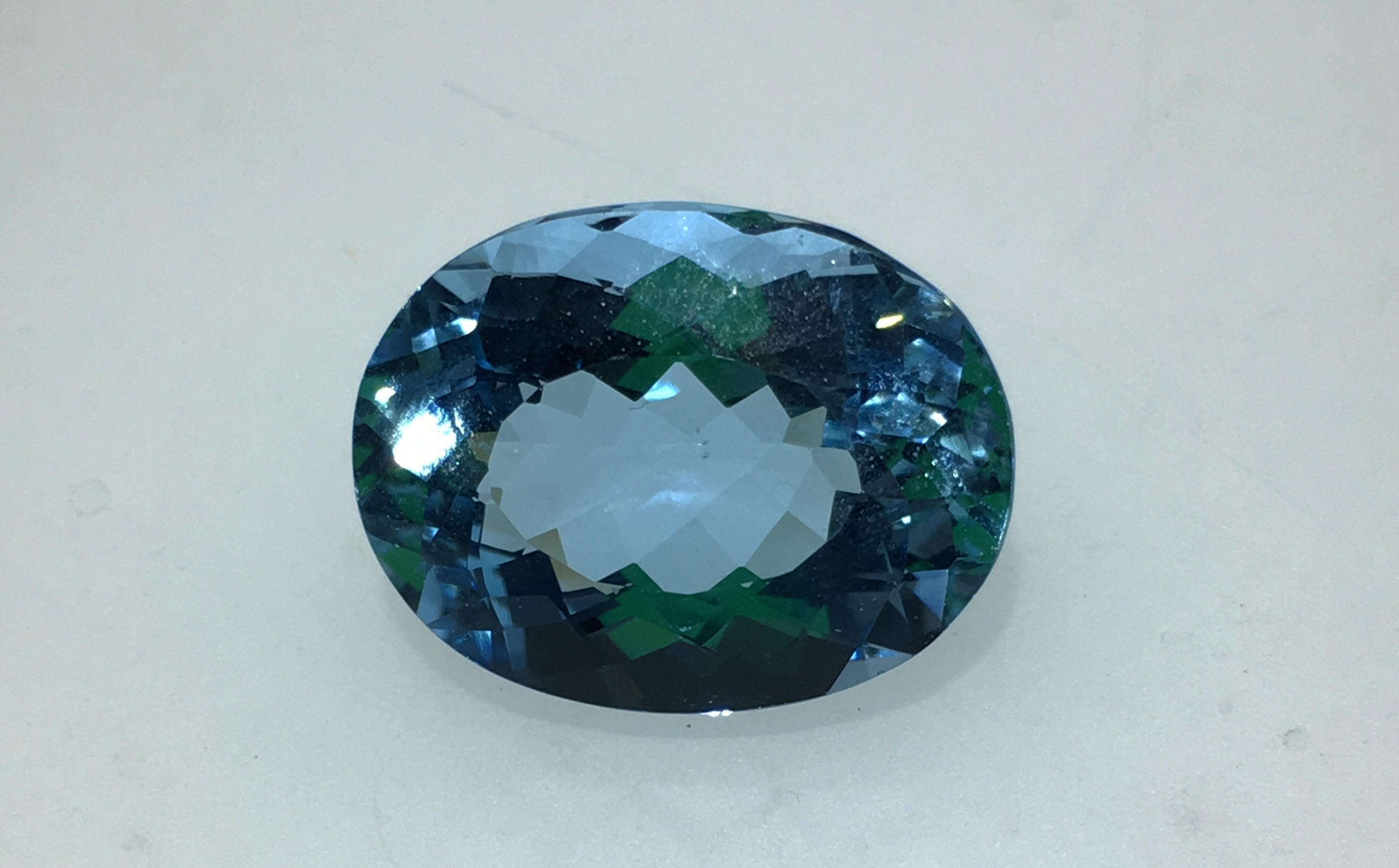
Rather than the sea, we recite of lagoons those that are lit up by magic at the tropics with the moonlight, the same that in a few centimeters of undertow are home to an incredible variety of colors, of brackish smells, of muffled voices, of movement, of life. What does aquamarine have to do with all this? Aquamarine is exactly the point! Its color is to be searched for in certain shades of that same water. Its clarity can only be compared to that of some waters. Its liquid liveliness cannot be compared to that of a glittering mountain stream, but related to that of certain poised peaceful ocean floors, that only certain lagoons are able to express with their silence, their mighty calm, their behind schedule time. Pick up an aquamarine and try to engagè with the vibrations of that stone. Time slows down. Its faded blue color, which is almost washed-out at beginning, lights up with imperceptible nuances, and opens you towards introspection, it recalls you that water permeates you, the water in which you were born; the water from which at one time life has advanced into the mainland, with a touch of nostalgia and desire to return.
The overpowering blue of the sapphire portrays the balance between the Waters that are above and the Waters that are below. The sky blue of aquamarine is all about more interior dimensions; it makes us be part of the lapping of the waters of those ancient oceans that still permeate us, that still make the pulse in our veins.
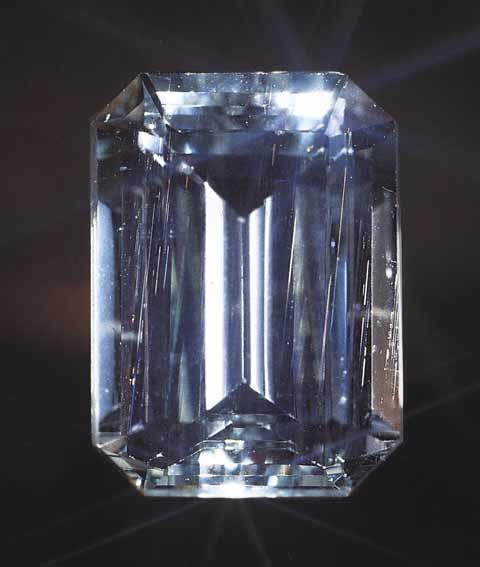
Lot of Aquamarine with drop cut: shifting position unanchores in brilliance.
The beryl family offers us stones that are very different between each other.The excessive power of emerald has nothing to do with the rarity of red beryl, or with heliodor, with its yellow color that looks like a wheat field in full sun, or aquamarine, with its watery blue shades. And yet there are beryls of a green light blue, halfway between emerald and aquamarine. The beryl whose color is due to a certain element rather than another was suggested be called “green beryl” rather than of “emerald“. But this is a pseudo-solution, since a greenish beryl can become blue upon heating, for example. It must be said, that, to further complicate things, there are natural stones that are very intense blue at the moment they are found inside mines, which remain of a beautiful blue after they have been processed, but with time, they’ll fade. I explain this not to frighten, but to suggest how changeable, unpredictable, almost alive, stones are, impossible to outline rigorously.
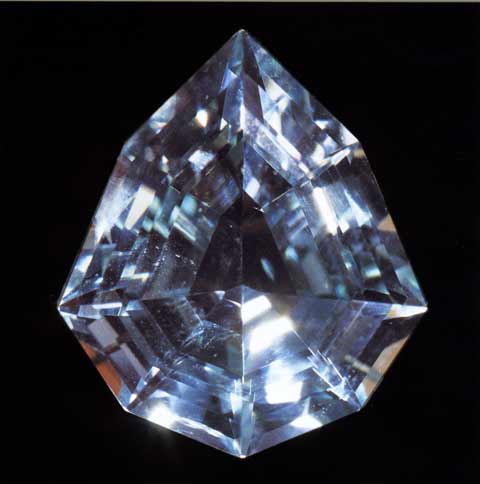
Stunning aquamarine, octagonal drop.
He who pretends to give a name or a number to each color of each gemstone, understands very little of their nature.
But lets go back to time. Lets see more closely what is the story behind “slowed down time.” It’s possible to find big and absolutely clear aquamarines; a very rare feature in precious stones. So it may be worth looking inside without getting disquieted by inclusions or divisione into zones of colors, meeting only surfaces and edges of the facets. This uniformity of color can, perhaps cause that strange feeling of ‘slow time’. The fact is that such an astonishing awareness continues and amplifies in the dark. If you lay the aquamarine on your right temple in a quiet place with dim light, and are looking for your peace of mind, you’ll find that relaxation can be immediate.
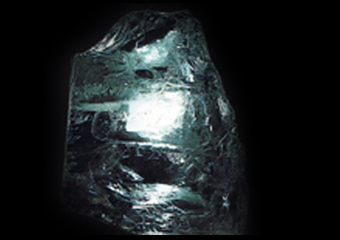
But not the silence, because you will feel a slight ebb and flow of water, very slow, even slower, and the delicate blue color will pervade your consciousness, and you will feel particularly well. Is something similar possibile with all crystals? Sure, but each crystal has its vibrations and its resonances. Each crystal is characterized by a large internal order, by a simple and geometric organization. Its nature is to influence the environment with its generally stationary energy.
This could result in a slowing down of time in aquamarine, an opening to astral perspicacity with quartz crystals, a conjunction to universal equilibrium with sapphire, and so on. It is possible to experiment other effects with other stones, but we recommend to immediately stop those experiments since they would generate negative moods. Many stones have intrinsic positive abilities, many are neutral, and some are negative. Since much depends on who approaches these problems, there are no fixed rules. Regarding aquamarine, contradictory aspects can be, at times, the uprising of a touch of melancholy and nostalgia.
You are alone, sitting on a rock enjoying the calm water of the lake or lagoon, in twilight. The mind wanders, and in the water you can see the reflection of a face, a distant memory. Aquamarine can give such a feeling and, if this happens, you will become a large aquamarine too, because this is all small talk! I do beg your pardon. A wizard worthy of respect, must first know how to play with his magic. Elated atmosphere is useless unless it is lived as a mere literary moment. Two words, just like that!, and two pages are blown away; though their memory, too recent to be deleted, goes from the surface into the depths of memory; from here it can work in a more subtle and powerful way. So now aquamarine belongs to your cultural background, and has always been part of it. Pick up one, purify it in salted water for one night, and relax with the stone on your right temple. If time does not slow down, unfortunately you will not like the music anymore and you will not want do dance anymore; and this is all impossible. And if time slows down, as is sure will happen, I hope you will forgive my little ritual which, perhaps, has puzzled you quiet a bit, but which has taught you to slow down the flow of time, as many times as you wish to. Beryl, in its most celebrated variety, emerald, has been synthesized in a thousand ways. With aquamarine no: until recently there have not been reports of synthetic aquamarines. But it is in the news in these days that Russia bodied beryl of all colors, including shades of blue aquamarine, in a lab. Of course these very similar imitations(*); bombed blue topaz and synthetic spinel being the most famous, while glass is the most common. Also, their colors can be “reinforced” with appropriate tricks.
Aquamarine is among the best known and most used stone in jewelry. Its fortune derives from the fact that, despite it’s a precious stone, and even though market prices are in constant growth, one can find rather large, extremely clear samples at prices that are, all in all, affordable.
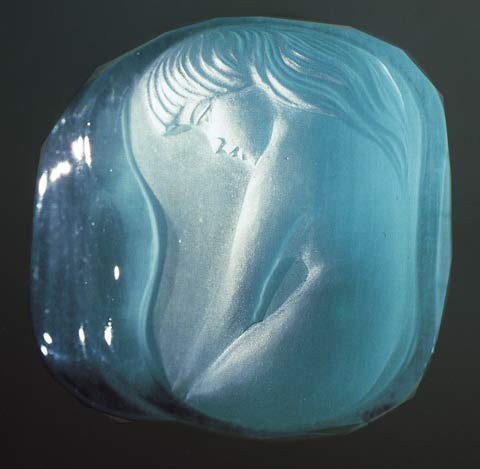
A crystal of over 250 ct has been engraved with the traits of a gentle girl
Note: We review that a “synthetic stone” is an artifact. Shaped in the laboratory with physico-chemical characteristics very similar to the corresponding natural stone. (Strictly speaking, it is improper to call it “stone”, because, if it is synthetic, it cannot be defined a “stone”). An “imitation” is, instead, whatever artifact (natural or artificial), similar only in appearance to the one that one wants to imitate, and not in its physical and chemical structure.
It would be wise here, to add two groups, namely, the ‘semi-synthetic stones’, obtained through the aggregation of natural material (the so-called ‘reconstructed stones’), and the ‘seminatural stones’, which are natural stones which have undergo a few changes in some of their charatcteristics in lab, usally in their color. All imitations are utilized in imitation jewelry, where research mostly lies in the aesthetic game, availability, low cost. In jewelry, natural stone is preferred, may be it is a little marked, the color is not perfectly uniform, but the stone most be natural.

Beryl technical gruop specifications
CRYSTALLIZATION: hexagonal system.
BASIC CHEMICAL COMPOSITION: silicate of aluminum and beryllium.
CHEMICAL FORMULA BASE:3BeO.Al203.6Si02 HARDNESS: from 7,5 to almost 8
SPECIFIC WEIGHT: from a minimum of 2.60 to a maximum of 2,91; usually around 2.70 to 2.72.
REFRACTIVE INDEX: (1.5680-1.6002) – (1.5632-1.5904) birefringence: from 0.0048 to 0.0098.
GEMOLOGICAL VARIETIES: Emerald (green); Morganite (pink); Aquamarine (blue); Eliodoro (yellow, yellow-light green); Goschenite (colorless). All these varieties owe their color to different minimum amount of chromogenic elements, generally metals, present in the crystal structure of the stone.
Aquamarine specifications
In addition towhat has already been said, valid for all beryls, for aquamarine we may add that coloring is due to traces of iron oxide.
MAIN DEPOSITS: Brazil, Russia, Madagascar, India, Pakistan, Myanmar, Australia, Mozambique. In Italy there are small but very beautiful crystals, in that wonderful museum of mineralogy that is the Island of Elba, generally inside geodes, in veins where also tourmalines can be found.
SPECIFIC WEIGHT: 2.69
REFRACTIVE INDEX: 1570-1575 birefringence: 0.005 Pleochroism: not very evident in the stones of pale color, pretty intense in the blue-green.
COLOUR: blue from nearly colorless to deep blue. There are aquamarines of delicate green color, which upon heating (just over 400 Celius degrees) lose their green and gain the blue. Some stones are a real worry for some gemologists, who don’t whether the stone should be defined “very pale emerald” or “green aquamarine” or, just to complicate things, “green beryl”! The important thing is that the stone is pleasant and it is natural; the name is secondary and illusory. We recall that on Earth, there are no two stones that are alike.
DIMENSIONS: all respectable museums of mineralogy, have large crystals of aquamarine. The biggest that we know of, is a crystal that exceeds the ton!
SIMILAR STONES: zircon, sapphire, blue topaz (natural and bombed), blue tourmaline, euclasio, blue spinel (natural and synthetic).
IMITATIONS: glass paste and synthetic stones that look like the natural.
SYNTHETIC STONES: the most difficult to identify with simple tools; for important precious stones a gemological certificate from a qualified institution is essential, as always.










